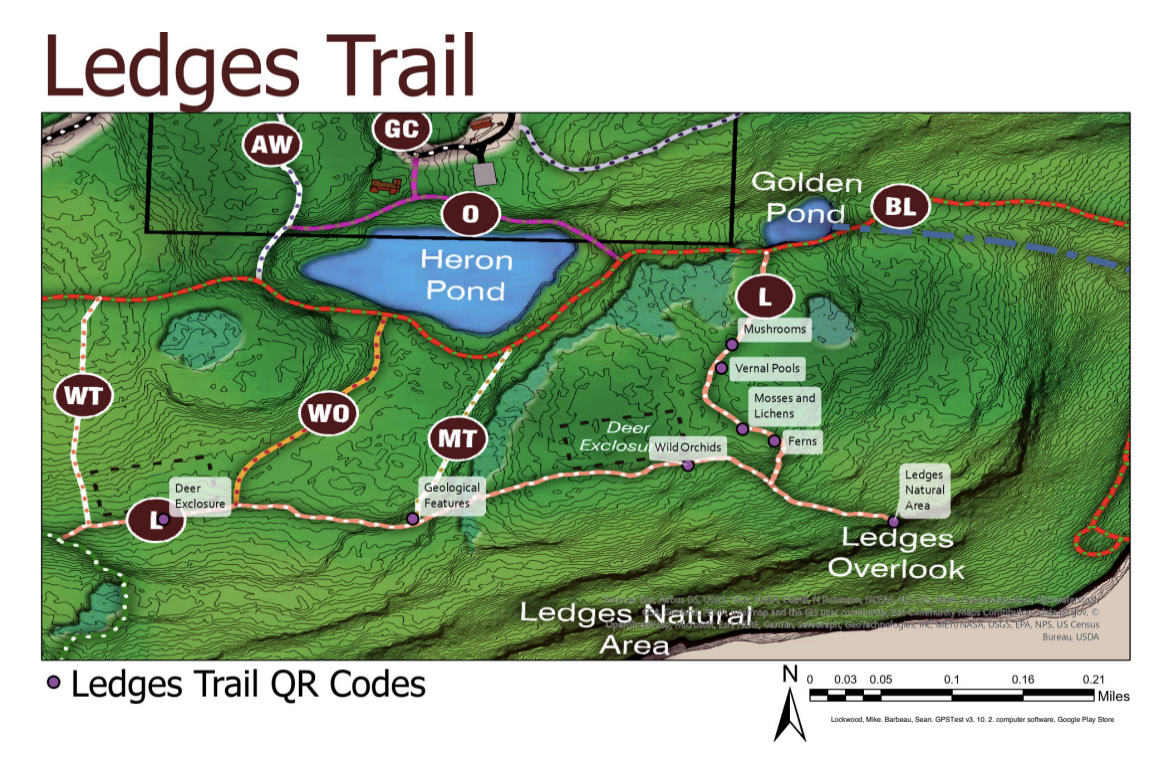Welcome to the Ledges Trail!
One of the newer trails at Lacawac, the trail was developed as an intern project during the summer of 2014 by a student from Bloomsburg University. The trail highlights Lacawac's 20-plus-years research deer exclosures and the ledges natural area. Ledges are located on the south side of the sanctuary and drop 250 feet to the shores of Lake Wallenpaupack. The ledges natural area supports various species of ferns and numerous mosses and lichens, as well as a mature forest.
The ledges area affords a splendid view of Lake Wallenpaupack in the winter months. It also makes a delightful spot for bird watching in the spring and summer, providing a view of the forest canopy. Lacawac offers one mile of undisturbed shoreline on Lake Wallenpaupack, one of Pennsylvania’s largest recreational lakes. Lacawac’s diverse habitat is home to an extraordinary variety of native wildlife.
The Ledges area was protected from development by Lacawac with the assistance of a grant through DCNR's Community Conservation Partnerships Program and with the participation of the Delaware Highlands Conservancy. The area represents outstanding examples of the conservation of native plant communities through public awareness and stewardship.
One of the newer trails at Lacawac, the trail was developed as an intern project during the summer of 2014 by a student from Bloomsburg University. The trail highlights Lacawac's 20-plus-years research deer exclosures and the ledges natural area. Ledges are located on the south side of the sanctuary and drop 250 feet to the shores of Lake Wallenpaupack. The ledges natural area supports various species of ferns and numerous mosses and lichens, as well as a mature forest.
The ledges area affords a splendid view of Lake Wallenpaupack in the winter months. It also makes a delightful spot for bird watching in the spring and summer, providing a view of the forest canopy. Lacawac offers one mile of undisturbed shoreline on Lake Wallenpaupack, one of Pennsylvania’s largest recreational lakes. Lacawac’s diverse habitat is home to an extraordinary variety of native wildlife.
The Ledges area was protected from development by Lacawac with the assistance of a grant through DCNR's Community Conservation Partnerships Program and with the participation of the Delaware Highlands Conservancy. The area represents outstanding examples of the conservation of native plant communities through public awareness and stewardship.
Location |
|
